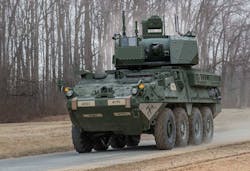Military seeks information security technology to protect databuses on combat vehicles from cyber attacks
WASHINGTON – What if an armored combat vehicle was rapidly moving to enemy contact through rigorous terrain while facing enemy fire, when its navigational and targeting systems were subject to cyber attacks that suddenly gave false, wrong or misleading information -- thus derailing the mission? Kris Osborn at Warrior Maven reports. Continue reading original article
The Military & Aerospace Electronics take:
8 Dec. 2020 -- What if its on-board data flow was instantly jammed, denied or disabled? Such a scenario, which would immediately compromise or even destroy an otherwise successful attack mission, could happen if a vehicle’s on-board serial databus were hacked by enemy cyber intruders.
This possibility of an information security breach is increasingly realistic given the alarming pace at which enemy cyber attackers are leveraging new technologies to innovate previously unknown or impossible methods of intrusion.
There is a critical need to enhance trusted computing of a vehicle or aircraft’s databuses, which allows for the transmission of mission critical information within platforms.
Related: Today’s military data storage goes far beyond rugged
Related: SWaP-optimized instruments for flight line test and measurement
John Keller, chief editor
Military & Aerospace Electronics
